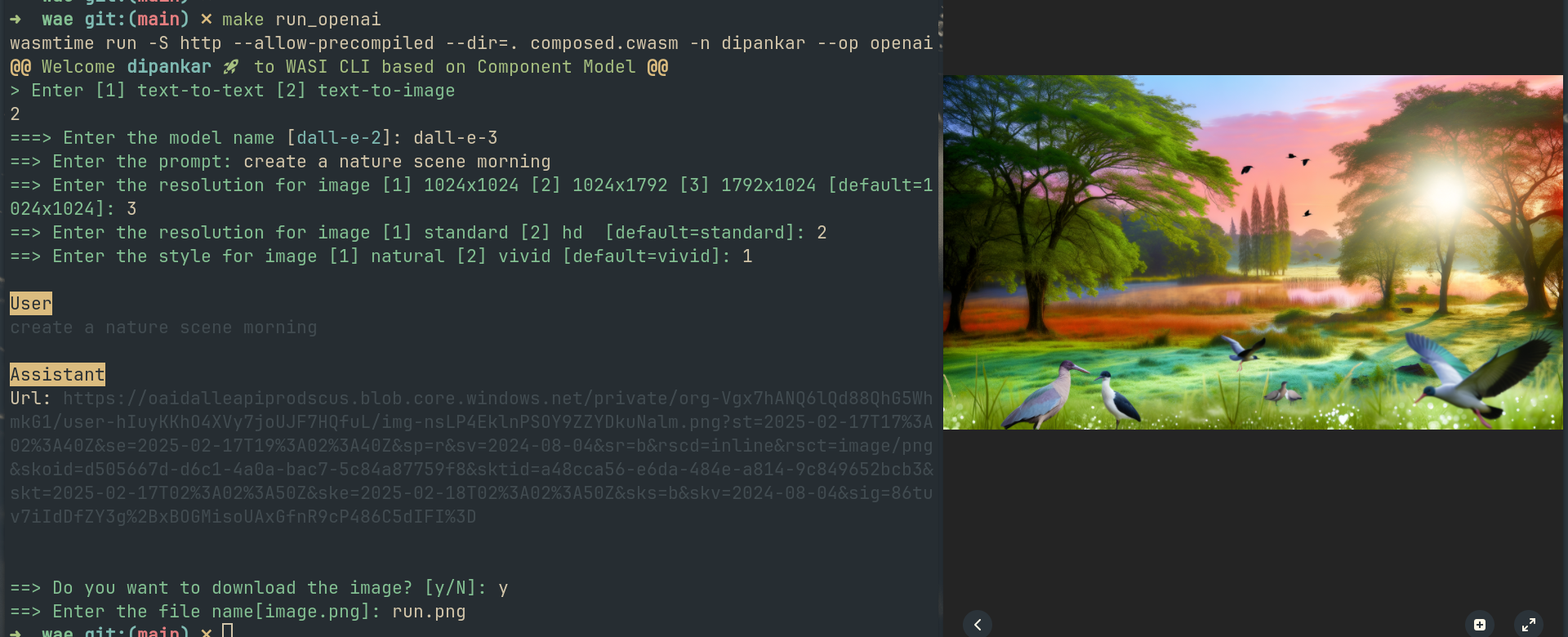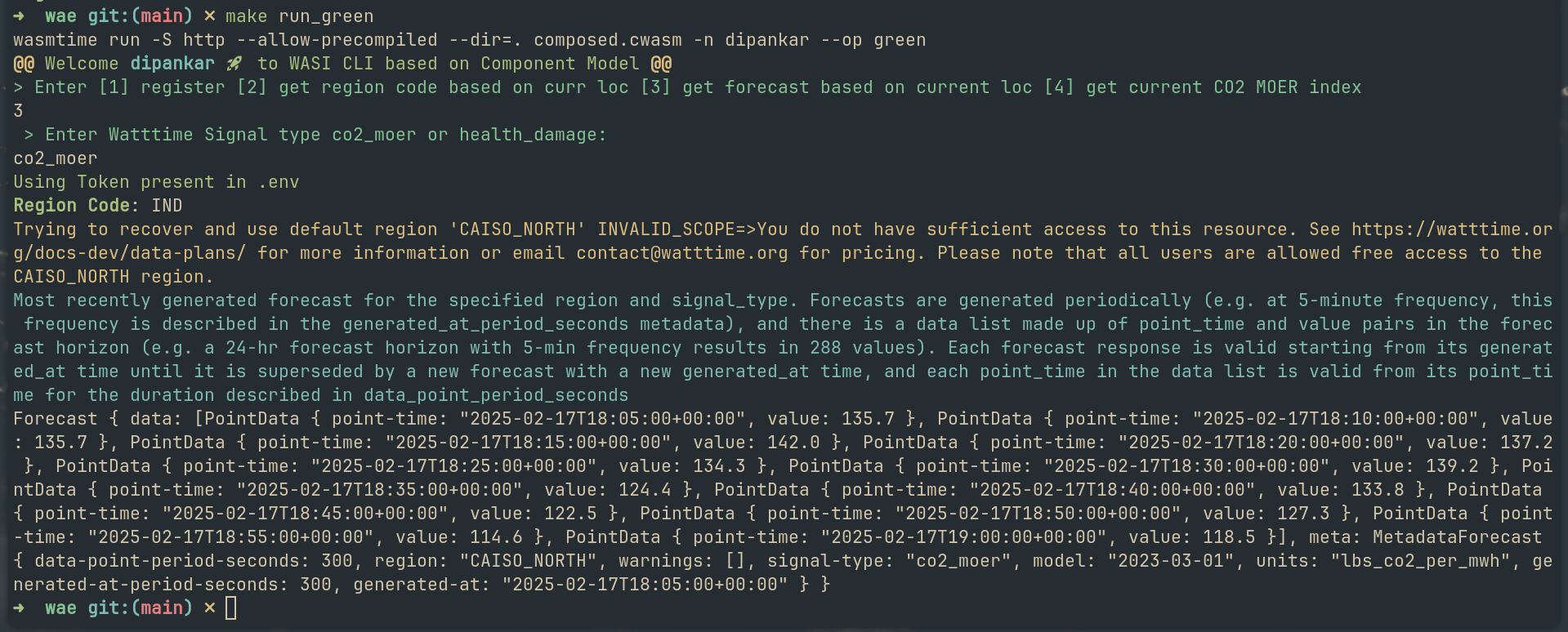My Experience with WASI Preview 2

Table of Contents
Why I wanted to try WASI Preview 2?#
I have been following the development of WebAssembly for quite some time now. I have been fascinated by the idea of running code in a sandboxed environment and single executable format but runnable on any architecture.
In this blog I will share my experience with the new WASI Preview 2 and how I created a working project using the new composition feature. Aka this is your KT ;)
Yes it has been almost 1 year since I have written this blog but I am still excited about it and I think it is a good time to share my experience with the WASI Preview 2.
Introduction#
A little introduction for you all. WASI is a system interface for WebAssembly. It is a standard that defines a set of system calls that can be used by WebAssembly modules. This allows WebAssembly modules to interact with the host system in a secure and portable way.
It is has properites like
cross-platform portability: copy the *.wasm file and run it anyware as long as you have a WASI runtime like wasmtime, wasmedge, etc.enhanced security: linear memory architecture and no access by default to any external resourcesimproved performance- and
streamlined development
Some interesting new feature of WASI preview 2 are :-
Composition: which allows you to compose multiple WASI modules into a single module. This is useful when you want to combine multiple modules into a single module for better performance or to reduce the size of the module and keeping local developer knowledge of specific components to a minimum and also increasing the changes of code reusability by just importing wasm module which implement the WIT (you can think of it as a contract).Socket: which allows you to create TCP and UDP sockets and perform DNS lookups from within a WebAssembly module. This is useful when you want to build networking software that runs on WebAssembly.Filesystem: which allows you to interact with the filesystem from within a WebAssembly module. This is useful when you want to read and write files from within a WebAssembly module.
Lets assume your team has expertise in building a specific component like a payment gateway or a video processing module. You can build a WASI module for that component and then compose it with other modules to build a complete application. This way you can keep the knowledge of the specific component within the team that built it and reuse it in multiple applications.
We first have repos for individiual components like this
Then here comes the interesting part of composition
And here comes the complete picture of these
With this you will have a SaaS product :) 🚀
Details about wasi@v0.2.0#
Okay before we jump to my experience here are some summary of current features by wasi@v0.2.0
wasi-http: a collection of interfaces for sending and receiving HTTP requests and responses. WASI-http additionally defines a world, wasi:http/proxy, that circumscribes a minimal execution environment for wasm HTTP proxies.wasi-cli: a World proposal for a Command-Line Interface (CLI) environment. It provides APIs commonly available in such environments, such as filesystems and sockets, and also provides command-line facilities such as command-line arguments, environment variables, and stdio.wasi-sockets: adds TCP & UDP sockets and domain name lookup to WASI. It adds the basic BSD socket interface with the intent to enable server and client networking software running on WebAssembly.wasi-filesystem: is a WASI API primarily for accessing host filesystems. It has function for opening, reading, and writing files, and for working with directories.wasi-random: for obtaining pseudo-random data.wasi-clocks: API for reading the current time and measuring elapsed time.wasi-io: API providing I/O stream abstractions. There are two types, input-stream, and output-stream, which support read and write, respectively, as well as a number of utility functions.
How I created a project out of it 🏗️#
I created a simple project to learn about composition feature Source Code.
Goal: To make a simple CLI which can read a .env file for secrets or user input to cli tool, will in-turn use the WIT file to talk to the different WASI module and perform the tasks.
Challanges: Didn’t have a wasi http module for openai (for text-to-image, text-to-text) or for wasmtime (CO2 moer for a given region) and also async support for wasi modules is not there so had to use a hacky way to make it work. like made the custom implementation of the wasi-http module for openai and wasi-cli for wasmtime. and later switched to already available crate waki.
By this tried out the http functionality of wasi, composition, filesystem, random.
Here is a sample of run ;)
Random Password generation
Talk with github api to get repo details
Talk with openai api to get image from text
Talk with wasmtime api to get CO2 moer emission for a given region
Conclusion#
Thus it was a fun experience to work on this. The community is very helpful even some of them went as far as helping me in SUnday night that is some dedication. I am looking forward to the next release of WASI and see what new features it brings.
Special thanks to Joel Dice and Fermyon Team for helping me out.






